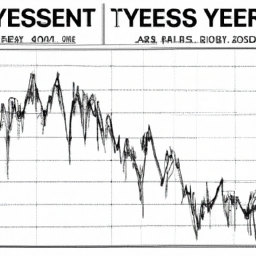The bond market is sending a loud and clear message: a US recession could be in the near future. Two-year Treasury notes are on track to trade at the widest closing yield differential above 10-year securities in more than four decades, with the spread between the monetary policy-sensitive two-year U.S. Treasury yield (US2Y) and the 10-year (US10Y) UST yield reaching the deepest levels in over 40 years.
On Wednesday, the spread between 2- and 10-year Treasury yields plunged to minus 106.7 basis points, a level not seen since September 22, 1981. This has been further compounded by India’s one-year government debt yield rising above that of the 10-year note on the same day, following higher-than-expected cutoffs at a sale of government bonds.
The gloomy outlook was prompted by Federal Reserve Chair Jerome Powell warning of a return to bigger spending and borrowing in the US and the need for additional stimulus to boost the economy. With US Dollar Index (DXY) seesawing around the December 2022 highs, the greenback bulls have taken the stage, further increasing fears of a recession.
The yield curve, or the difference between long-term and short-term US Treasury yields, has long been seen as a reliable predictor of economic activity. When the curve inverts, it has often been a sign that a recession is looming. During an inversion, short-term yields typically rise above longer-term ones. This indicates that investors are expecting the Fed to cut rates in the near future to stimulate the economy, a move that is usually made during a recession.
The bond market’s reaction to the Fed’s warning has been swift and is being seen as a sign of further economic weakness. The yield curve inversion has been accompanied by a flight to safety, with investors turning to safe-haven assets like gold, US Treasuries and the US dollar. This has resulted in a sharp drop in yields, with investors now believing that the US economy is headed for a recession.
Analysts have warned that the yield curve inversion could be a sign of a looming recession. The US has been in an economic expansion for more than 10 years, with the last recession occurring in 2009. A recession is defined as two consecutive quarters of declining economic activity. While the US economy is currently in a strong position, the yield curve inversion could be an indication that the current expansion is coming to an end.
The bond market’s reaction to the Fed’s warning is being seen as a sign of further economic weakness. Investors are now concerned that the US economy is headed for a recession, and are turning to safe-haven assets to protect their investments. The yield curve inversion is a sign that the Fed may need to step in and provide additional stimulus to boost the economy.
